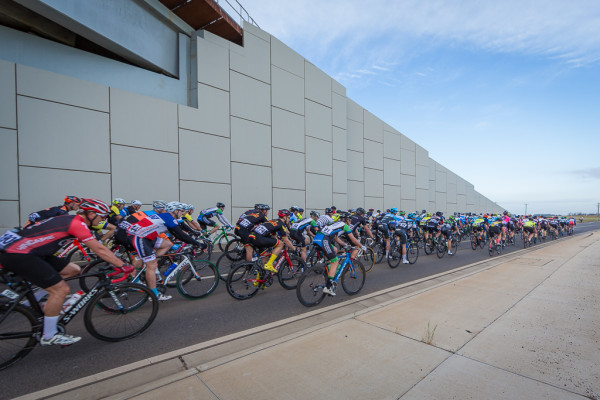By Jamie Finch-Penninger – @FishysCP
Amidst calls for changes to the race by David McKenzie and tips of bunch-riding etiquette, the issue of whether the lower grades should be racing amongst the NRS in the Melbourne to Warrnambool has been at the forefront of the minds of many after the 100th edition of the race on Saturday. The race was a really enjoyable one, but it was marred by the constant reports of crashes within the bunch. Many of the less experienced riders have little know-how when it comes to riding in large bunches, and that can result in a lot of accidents that are probably avoidable. CharterMason Giant DS Damian Harris was vocal in his displeasure following an incident where one of his riders, Tom Robinson, was taken down, suffering some deep gashes and breaking his bike.
“It’s always a nervy start to Warrny, but because it wasn’t super fast with the headwind and the bunch not chasing too hard, the lesser grades could stay with it for a lot longer. There were C-graders in there at the 200 kilometre point. Tom Robinson got snapped at one point, the bike’s broken and apart from his injuries, who’s going to pay for the bike? Not her (the rider who caused the crash) and not the race. The problem is that the lesser riders are on their limit just trying to keep up, and they’ll take risks to do so. There needs to be a separate start for the lower grades, women and the NRS race, maybe you stagger the start, I’m sure there are other options as well.”
Tom Robinson also spoke about the incident that saw him spend 40 minutes with the medics after the race. “I was just coming back to get bottles from the team car, I took a quick look back and I saw a rider with her head down charging through the convoy, she looked up at the last second, and the next thing I know I was face down in the gravel.” Drew Ginn also commented on the amount of crashes after the finish. “It was very hectic in the bunch, very scary actually with the number of falls, I hope all the other riders are OK.”
It’s not necessarily just the injuries, or threat of broken equipment, but crashes also affect the way the race is run. Defending champion Oliver Kent-Spark had to do a long chase to catch back on with the peloton after being caught behind a major crash and Lucas Hamilton eventually ran out of spare bikes and had to abandon after changing machines due to a crash earlier in proceedings. Kent-Spark eventually finished 3rd in the race, and you have to wonder how much of his kick to the line he lost in that long chase back to the peloton.
On the flip side of the coin, the main points against splitting the starts are the ones of cost and of the mass participation element of the race. The cost part stems from the increase in the “envelope” (the cordon of no road traffic, regulated by the police, which follows the race), but you would have thought that would be offset, at least partially, by the increase in entry fees that could be raised by increasing the field size in the lower grades (capped at 300 at the moment). Part of what makes the Melbourne to Warrnambool one of the most anticipated events on the local calendar is the mass participation element of it, where non-elite riders can train all year for their one shot at performing on the top level against the big teams of the NRS, and maybe even take a little glory if they are very lucky. I was down at the St Kilda criteriums the day after and everyone was sharing battle stories and I heard more than a few excuses being thrown about for why they were dropped. Maybe the race’s iconic nature would be lost if the main race switched to being an elite event, as it wouldn’t be the one big race that all riders want to do well in to show that they can match it with the best and instead would be more of a Gran Fondo.
Safety needs to be of paramount concern of any race however, and even the unique nature of an event like Warrny won’t stand the test if the NRS teams start pulling riders for safety concerns, or even worse threaten legal action.
Check out Fishy’s website fishyscyclingpreviews.weebly.com for more great interviews, race previews and reports.



